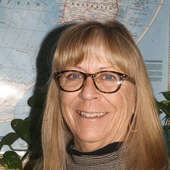- Pete Matz: railroad engineer and singing sensation (3/28/25)
- Historic shift: Women hired at McCook Roundhouse (3/21/25)
- Who were they? Seeking names for these historic snapshots (3/14/25)
- McCook’s government transformed in 1950; city manager form of government adopted and first female councilperson elected (3/7/25)
- Beyond the front lines: Veterans who shaped our communities (2/28/25)
- Civil War stories: The bugler and the drummer (2/21/25)
- Jack Benton: A broadcast trailblazer (2/7/25)
Schools in early in Red Willow County
Friday, August 28, 2020
The push to make education of our young people (compulsory public education) started with the Smith-Towner bill in 1920. My mother was 8 years old by then. Imagine that! Red Willow county began to be settled in 1871, 39 years prior, and yet one year after Red Willow County was officially organized in 1873, nine school districts had been formed.
Today’s mind thinks that means public education, supported by tax dollars, in school buildings built with tax dollars but reality for those settlers was far from that. The following excerpts are taken from the notebook entitled: H. P. Waite.
“ But here(Red Willow County)-as yet-there was no property tax-for government land, which was all there was, could not be taxed. Worse than that, the settlers had no money with which they might have paid taxes-if any had been levied. Notwithstanding the obstacles seemed insuperable, schools they did have-though not the first year.”
“Within one year after the county was organized nine school districts had been formed. On July 1, 1874, only one of these nine districts had a school house, though several of them held short terms of school. The school census enumerated 122 children of school age. Ten residents of the county-two men and eight women-had been licensed to teach. The highest wages paid to any teacher were $20.00, and the lowest $15.00 per month, and the total expenditures for school purposes were $359.07 – about two thirds of which was obtained from state apportionment-the balance was still owing to those who had rendered service. (the teachers)”
“The single school house in the county was built of sod. Its interior dimensions were 16 x 20 feet. The electors in five other districts had voted to build but were prevented by lack of means, owing to an invasion of grasshoppers. The sessions of school in those districts that did not have a school house were held in the houses of settlers, and the teachers in most instances donated their services. The text book questions was not the least serious of the many that arose. The settlers had come from all parts of the country, bringing with them such text books as they had. As may be supposed these were in great variety, and as the parents were too poor to buy others (the first free text book law was not passed until 1891), it was necessary for teachers and pupils to do the best they could with what they had.”
“By 1878 (McCook was four years from being created) fifteen districts had been organized. There was still but one frame school house in the county. In each of nine districts school was conducted either in a sod house or a dug-out. Only two districts in the county held as much as six months of school.”
“In 1885 with 48 districts there were 17 school houses-3 frame-14 either sod or dug-out. Only 7 of the 17 had boughten equipment. In 1889 two brick school houses-one in McCook and one in Indianola-were built. In the 76 districts there were 28 frame and 38 sod school houses.”
“The teacher was nearly always a resident of the district-an inexperienced boy or girl, illy equipped to impart the little knowledge he or she possessed. The teacher’s most difficult problem was the maintenance of discipline, and his merit was gauged by his success in doing so. “
“It was not uncommon for one of these poorly paid, poorly equipped country school teachers to have 30 or 40 children in his charge. The marvel is not that the pupils who had no other educational opportunities than the rural school of the pioneering period did not show accomplishments. The marvel is that they acquired any knowledge.”
My maternal grandmother was a school teacher in the Dalton/Bridgeport area at the age of 15. She had been educated in South Dakota before her parents moved to Nebraska. She rode a horse to her job and carried a 7-shot revolver with her for when she was teaching, the frontier was still wild. She too may have been in charge of many pupils, but, speaking from direct observation, I’m guessing her classroom was completely under her control.
I’m going to share one or two more sections of these writings and then return the book to our library for your research. In the meantime, you can access many records at www.swngs.org.

